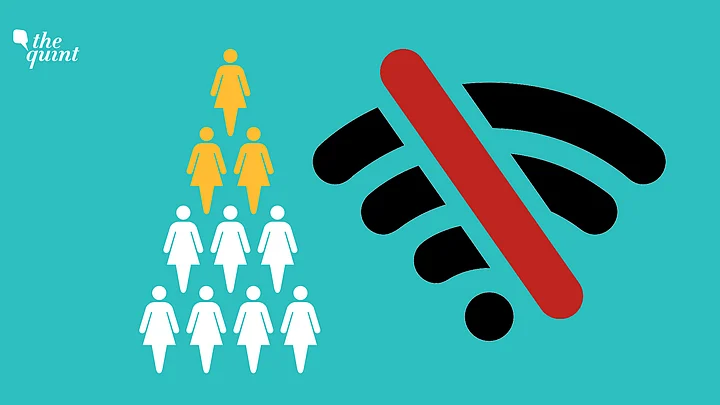In India, Puja, a determined woman, faced relentless online abuse. Her harasser, hidden behind a screen, targeted her with explicit messages and threats. Trying to seek justice, she reported the cybercrime, but encountered a complex legal process and a lack of specific cybercrime laws. Frustrated by the challenges, she wondered,
"Would recognising the right to the internet provide a stronger foundation for combating cybercrimes against women like me?"
In the Information Age, our world has been reshaped by the technological revolution, ushering in the era of the "network society," as described by Manuel Castells. Yet, amidst this digital transformation, a pressing concern looms – the rise of cybercrimes against women.
Cybercrimes Against Women: A Growing Threat
The internet and associated technologies have given rise to new opportunities for harmful activities. Cybercrimes – a global concern – disproportionately affect women. India, despite enacting legislation to combat cybercrimes, lacks specific provisions addressing cyber crimes against women.
The Budapest Convention, designed to tackle such crimes, awaits India's ratification.
In India, recent years have seen a surge in cybercrimes, with urban areas, particularly Delhi, reporting the highest incidence. States like Karnataka, Maharashtra, and Assam account for 55 percent of all reported cases. The COVID-19 pandemic exacerbated the issue, with lockdowns leading to a significant increase in cybercrimes, especially those targeting women.
The Shadow Pandemic of Cyber Violence
The pandemic intensified cybercrimes targeting women in India. With women spending more time online, perpetrators had greater opportunities for harm in the digital realm. Online abuse, hate speech, harassment, sexual violence, and threats led the United Nations to term it the shadow pandemic.
Gender disparity in internet usage, with 67% male users and only 33% female users, has contributed to a surge in "technology-facilitated sexual violence."
India has, in this respect – witnessed a rising trend in cybercrimes, with 12,317 cases reported in 2016, 21,796 in 2017, 27,248 in 2018, 44,735 in 2019, 50,035 in 2020, and 52,974 in 2021. This reflects a crime rate increase from 1% to 3.7%, making India one of the countries most affected by cybercrimes in the technologically advanced world.
The Right to Internet?
The Right to Internet entails unrestricted access to the digital realm, encompassing both "negative" (freedom from state interference) and "positive" (government measures for access) rights. The United Nations recognises the right to internet access, emphasising its link to freedom of speech and expression. In India, this right can be inferred from existing constitutional protections, such as freedom of speech and expression, as courts have consistently broadened these rights to meet evolving societal needs.
A significant document supporting this right is the 2011 report by the United Nations Special Rapporteur for Freedom of Speech and Expression. This report grounds the right to internet access in the right to freedom of speech and expression as guaranteed by international declarations and covenants. Recognising internet access as a fundamental human right, India is bound by international agreements like the International Covenant on Civil and Political Rights (ICCPR).
In 2014, the United Nations Human Rights Council (UNHRC) passed a non-binding resolution affirming that individuals should enjoy the same rights in the digital world as in the physical world. In 2016, another resolution condemned internet shutdowns and disruptions, emphasising the protection of offline human rights in the digital sphere.
The Right to Internet Access in India's Democracy
India's democratic principles align with the right to internet access, expanding on existing constitutional rights. In the Kesavananda Bharati case, the judiciary emphasised that fundamental rights do not possess static meanings; they evolve based on experiences and challenges. This principle mandates the courts to continuously broaden the scope of these rights to better serve society's needs.
Furthermore, addressing cybercrimes requires tackling under-reporting, which currently obscures the true scale of the problem. Psycho-social cybercrimes pose a significant threat to women, particularly due to the gender gap in online access. These crimes thereby violate fundamental rights, including the right to privacy, freedom of speech, dignity, education, and information.
Conclusion
In the face of a growing crisis of cybercrimes against women, recognising the right to internet access is imperative. It aligns with India's democratic principles, expands on existing constitutional rights, and addresses the gender data gap. Empowering women with the right to a safe and inclusive online environment is a crucial step toward a more equitable and just society in the digital age. It is time to act, bridge the gender gap, and make the internet a safer space for all.
"The internet is the new frontier in the battle for women's rights."
(Dr Fauzia Khan is a Rajya Sabha member and former Minister of State for GAD, Education, Health, and WCD in the Government of Maharashtra. Pallavi Meena is a lawyer. This is an opinion piece. The views expressed above are the author’s own. The Quint)
(At The Quint, we question everything. Play an active role in shaping our journalism by becoming a member today.)
